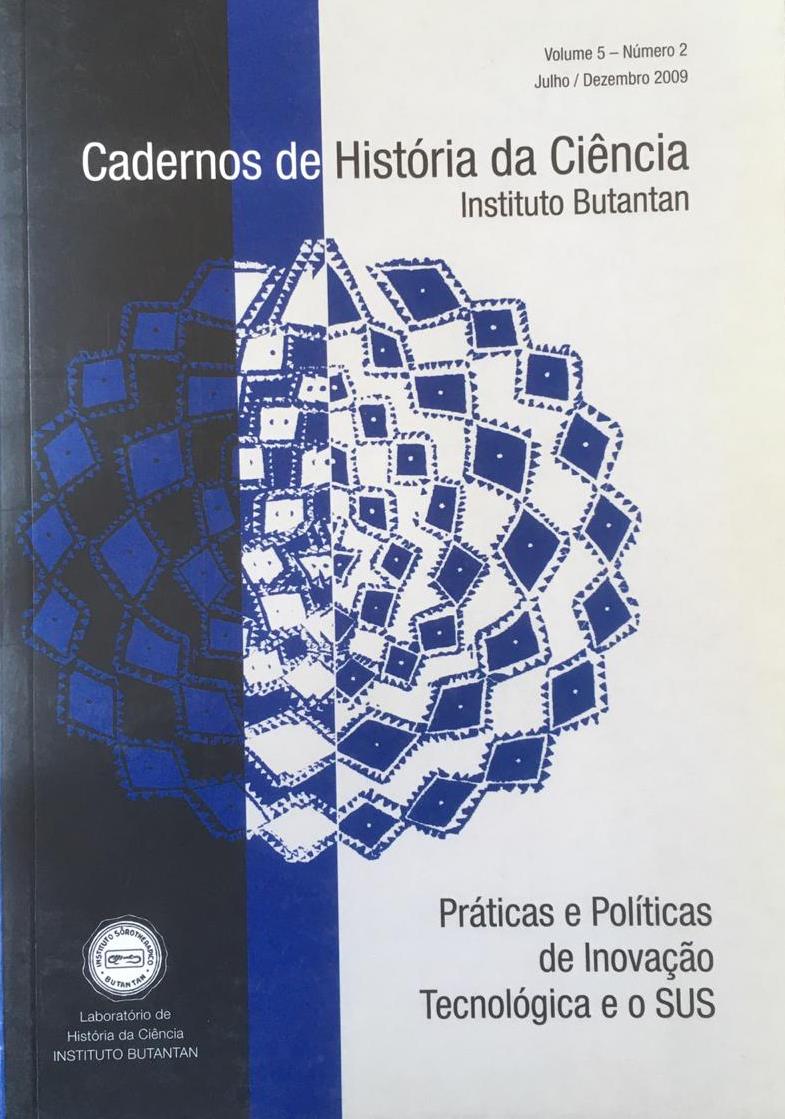Abstract
This paper describes how, in the last 50 years, was the evolution of the scientific paradigms that underlie the rational development of drugs for cancer therapy, up to the presently novel monoclonal antibodies. In addition, the article briefly summarizes the origin and construction of the CAT/CEPID Project, showing how this experience can help to answer the question: can the Instituto Butantan follow the biotechnological path from natural toxins to new drugs? The text was prepared based on a presentation made at the “Seminário – Práticas e Políticas de Inovação Tecnológica para a Consolidação do SUS“, held on September 22th, 2009 in the Instituto Butantan.
References
Armelin, HA. Pituitary extracts and steroid hormones in the control of 3T3 cell growth. Proc Natl Acad Sci. U S A, 1973; 70(9):2702-2706.
Carpenter, G., Cohen, S. Epidermal growth factor. Annu Rev Biochem. 1979; 48: 193-216.
Citri, A., Yarden, Y. EGF-ERBB signalling: towards the systems level. Nat Rev Mol Cell Biol. 2006; 7(7): 505-516.
Cohen, S. Isolation of a mouse submaxillary gland protein accelerating incisor eruption and eyelid opening in the new-born animal. J Biol Chem. 1962; 237: 1555-1562.
Cohen, S. Epidermal Growth Factor. Nobel Lecture. 8 december, 1986.
Harries, M., Smith, I. The development and clinical use of trastuzumab (Herceptin) Endocrine-Related Cancer. 2002; 9: 75-85.
Heilderger, C. et al Fluorinated pyrimidines, a new class of tumour-inhibitory compounds. Nature. 1957; 179: 663-666.
King, A., Selack, M.A., Gottlieb, E. Succinate dehydrogenase and fumarate hydrase: linking mitochondrial disfunction and cancer. Oncogene. 2006; 25: 4675-4682.
Masul, H., Kawamoto, T., Sato, JD. Wolf, B., Sato, G., Mendelsohn, J. Growth Inhibition of Human Tumor Cells in Athymic Mice by Anti-Epidermal Growth Factor Receptor Monoclonal Antibodies. Cancer Res. 1984; 44: 1002-1007.
Mendelsohn, J. EGF receptors as a target for cancer therapy Transactions of the American Clinical and Climatological Association. 2004; 11: 249-255.
Nordenskjold, B., Skoog, L., Brown, N., Reichard, P., Deoxyribonucleotide Pools and Deoxyribonucleic Acid Synthesis in Cultured Mouse Embryo Cells. J Biol Chem. 1970; 245: 5360-5368.
Nordlund, P., Reichard, P. Ribonucleotide Reductases Annu. Rev. Biochem. 2006; 75: 681-706.
Savage, CR Jr., Hash, JH., Cohen, S. Epidermal growth factor. Location of disulfide bonds. J Biol Chem. 1973; 248(22): 7669-7672.
Valabrega, G., Montemurro, F., Aglietta, M. Trastuzumab: mechanism of action, resistance andfuture perspectives in HER2-overexpressing breast cancer. Annals of Oncology, January 17, 2007
Carpenter, G., Cohen, S. Epidermal growth factor. Annu Rev Biochem. 1979; 48: 193-216.
Citri, A., Yarden, Y. EGF-ERBB signalling: towards the systems level. Nat Rev Mol Cell Biol. 2006; 7(7): 505-516.
Cohen, S. Isolation of a mouse submaxillary gland protein accelerating incisor eruption and eyelid opening in the new-born animal. J Biol Chem. 1962; 237: 1555-1562.
Cohen, S. Epidermal Growth Factor. Nobel Lecture. 8 december, 1986.
Harries, M., Smith, I. The development and clinical use of trastuzumab (Herceptin) Endocrine-Related Cancer. 2002; 9: 75-85.
Heilderger, C. et al Fluorinated pyrimidines, a new class of tumour-inhibitory compounds. Nature. 1957; 179: 663-666.
King, A., Selack, M.A., Gottlieb, E. Succinate dehydrogenase and fumarate hydrase: linking mitochondrial disfunction and cancer. Oncogene. 2006; 25: 4675-4682.
Masul, H., Kawamoto, T., Sato, JD. Wolf, B., Sato, G., Mendelsohn, J. Growth Inhibition of Human Tumor Cells in Athymic Mice by Anti-Epidermal Growth Factor Receptor Monoclonal Antibodies. Cancer Res. 1984; 44: 1002-1007.
Mendelsohn, J. EGF receptors as a target for cancer therapy Transactions of the American Clinical and Climatological Association. 2004; 11: 249-255.
Nordenskjold, B., Skoog, L., Brown, N., Reichard, P., Deoxyribonucleotide Pools and Deoxyribonucleic Acid Synthesis in Cultured Mouse Embryo Cells. J Biol Chem. 1970; 245: 5360-5368.
Nordlund, P., Reichard, P. Ribonucleotide Reductases Annu. Rev. Biochem. 2006; 75: 681-706.
Savage, CR Jr., Hash, JH., Cohen, S. Epidermal growth factor. Location of disulfide bonds. J Biol Chem. 1973; 248(22): 7669-7672.
Valabrega, G., Montemurro, F., Aglietta, M. Trastuzumab: mechanism of action, resistance andfuture perspectives in HER2-overexpressing breast cancer. Annals of Oncology, January 17, 2007
Downloads
Download data is not yet available.
Metrics
Metrics Loading ...
